|
Made With |
|
|
|
|
Dr. Hoffer's Travel WebSite This site was last updated 06/22/12 |
Friday June 5, 2009
First, what is this place called Liechtenstein [Leek-ten-stine]? Here is a sign they have up for English speakers.
As you can see the little Principality (German: F�rstentum)
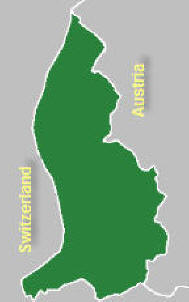 of
Liechtenstein is just a sliver of land
of
Liechtenstein is just a sliver of land
wedged
between the great Rhein (Rhine) River and Switzerland on the west and the 6,000 ft
(1,829 km) high jagged massif (mountains) called Der Drei Schwestern (Three
Sisters) (below) and Austria on the east. Its area is 61.7 mi� (160 km�)
and it has an estimated population of 35,000 (one third of them foreigners.)
Liechtenstein is the smallest German-speaking country in the world, and the only alpine country to lie entirely within the Alps (Three Sisters below.)
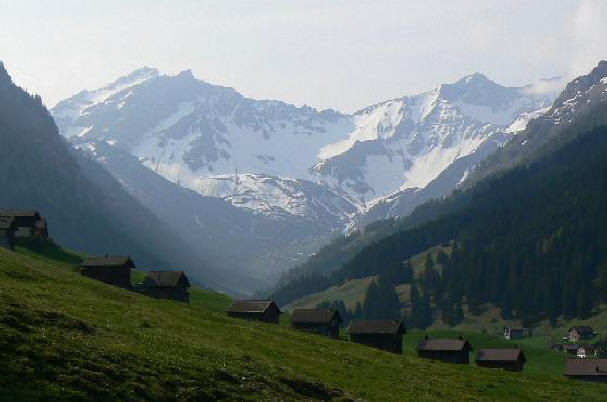
It is also the only
German-speaking country not to
 share a common border with Germany. The
people here speak Alemannic, a German dialect close to that used by the
Swiss and Austrians, and most of them understand English. The Swiss franc
is the official
share a common border with Germany. The
people here speak Alemannic, a German dialect close to that used by the
Swiss and Austrians, and most of them understand English. The Swiss franc
is the official![]() currency in Liechtenstein.
currency in Liechtenstein.
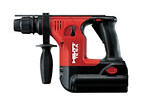 Its
largest manufacturer is
Hilti which makes anchors and power tools in the city of Schaan (the largest
city.) It is also the largest producer of false teeth in the world said to
be 60 million every year. Below you can see the massif creating the
dramatic backdrop for Vaduz.
Its
largest manufacturer is
Hilti which makes anchors and power tools in the city of Schaan (the largest
city.) It is also the largest producer of false teeth in the world said to
be 60 million every year. Below you can see the massif creating the
dramatic backdrop for Vaduz.
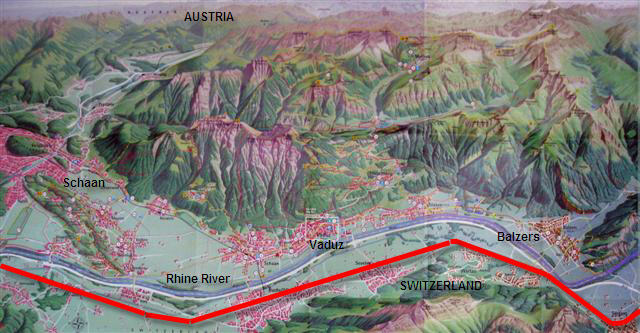
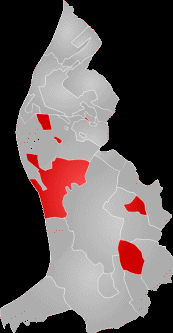
The capital city, Vaduz, is in the center in the west and the map above right shows the areas (in red) that it controls. Its most prominent landmark, the Vaduz Castle (below,) is the home of the reigning prince of Liechtenstein.
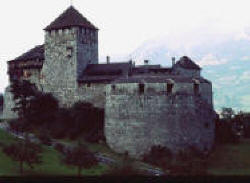

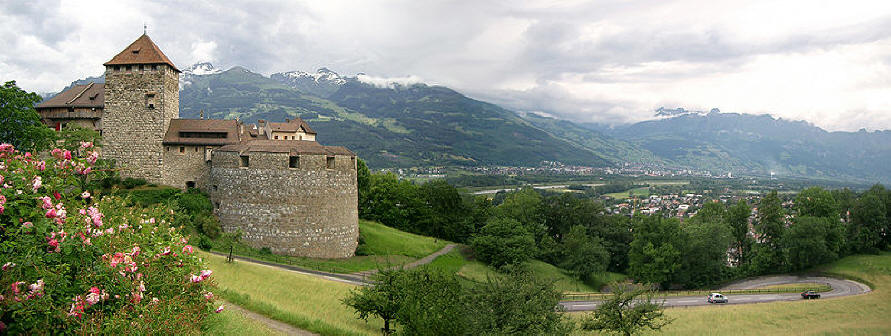
You can see how the castle lords it over the city of Vaduz. Below are some dramatic stock aerial photos of Vaduz.
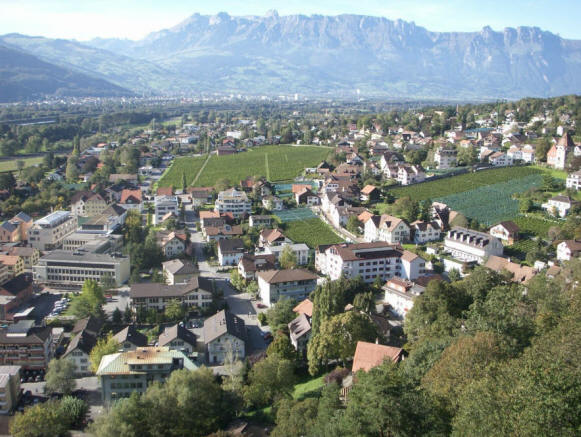
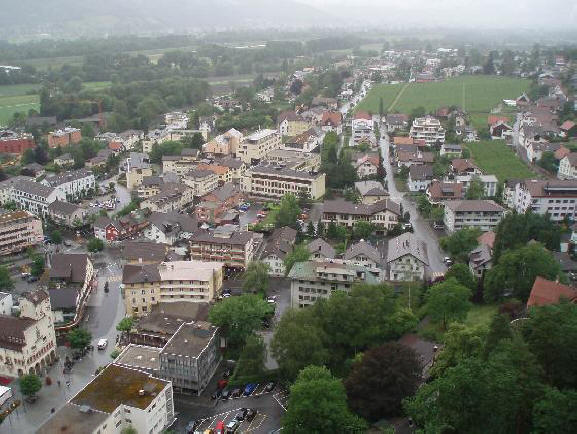
Here are some stock photos of downtown Vaduz and the historic Red House, the oldest building in the area.
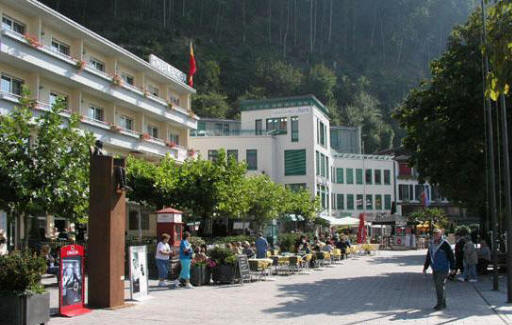
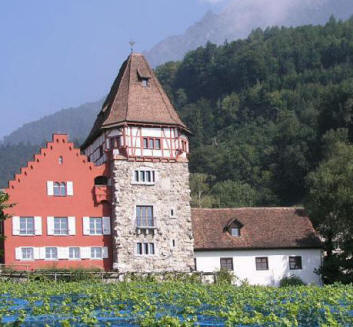
Below are stock photos of some of the other cities in Liechtenstein; Steg on the left and Triesenberg on the right.
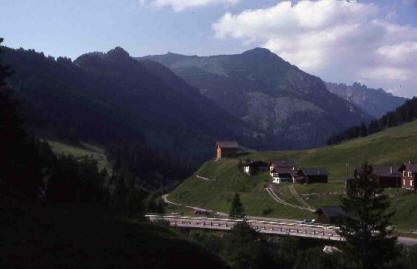
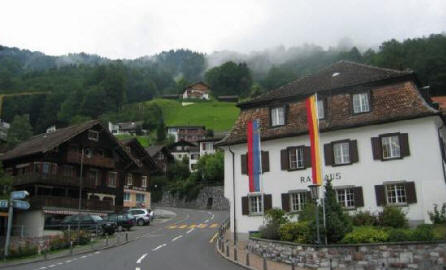
And here are the cities of Mauren (left) and Werdenberg (right.)
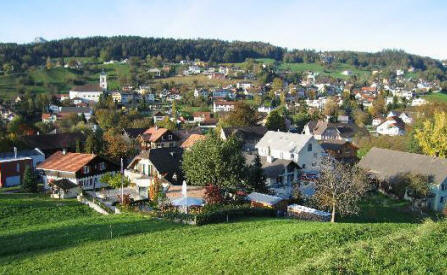
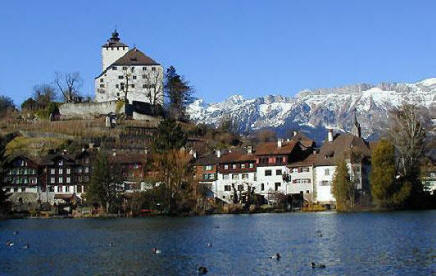
And finally the city of Malbun (left) and the largest city of Schaan (center) with the areas it supervises (in red, right.)
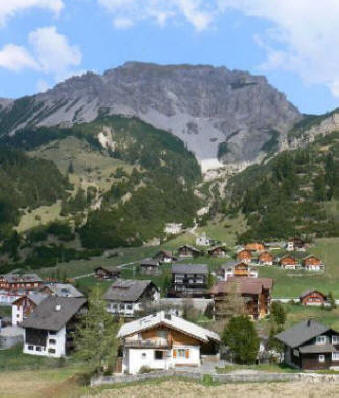
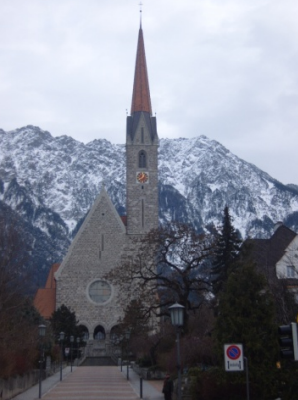
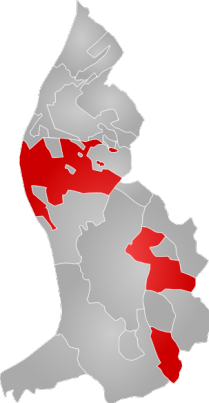
Below is an old postcard of Schaan with its prominent church and its coat of arms.
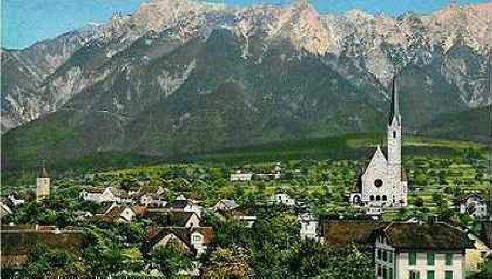
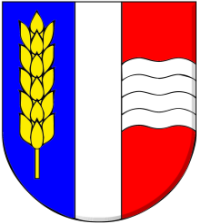
Here is an example of their license plate...

...and the old coins from Austria (left) and Switzerland they use they used early in the 20th Century.

I knew basically nothing about this little "country" and you may find the History of Liechtenstein quite interesting. (If not, just scroll down.)
First, the word Leichten-stein in German means Bright-stone.
The Princely House of Liechtenstein is one of Europe�s oldest families of noble lineage. A bearer of the name is first mentioned around 1136 as Hugo von Liechtenstein. He called himself after the Liechtenstein Castle, situated south of Vienna.
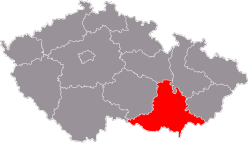 The
early Liechtenstein family had properties in the vicinity of the family castle
in Austria and others close to Lower Austria�s north-eastern border. The
uninterrupted ancestry of the Liechtenstein family began with Heinrich I of
Liechtenstein (died 1265,) who obtained the lordship over Nikolsburg in
South Moravia
(the red area in the map of the Czech Republic, right) as freehold property.
The family crest and official sword is below.
The
early Liechtenstein family had properties in the vicinity of the family castle
in Austria and others close to Lower Austria�s north-eastern border. The
uninterrupted ancestry of the Liechtenstein family began with Heinrich I of
Liechtenstein (died 1265,) who obtained the lordship over Nikolsburg in
South Moravia
(the red area in the map of the Czech Republic, right) as freehold property.
The family crest and official sword is below.


The Liechtenstein Castle (below left,) situated near the town of Maria Enzersdorf on the edge of the Wienerwald (Viennese Forest) south of Vienna. It was originally built during the 12th century, destroyed by the Ottomans in 1529 and again in 1683, and remained in ruins until 1884, when it was rebuilt. The princely crown is shown below right.
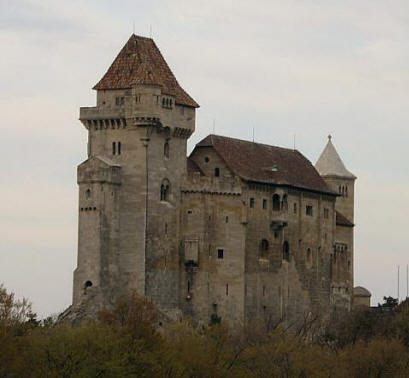

 The founding family were prominent members of the
Habsburg Empire
(Hapsburg coat of arms, right) and Karl I obtained the original land tract which
was later added to forming this little independent principality
The founding family were prominent members of the
Habsburg Empire
(Hapsburg coat of arms, right) and Karl I obtained the original land tract which
was later added to forming this little independent principality
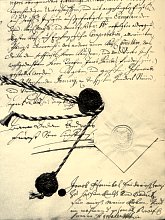 shown
in this map from 1721 (below left.)
shown
in this map from 1721 (below left.)
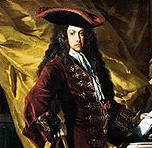 Below
is Karl I's 1699 banner (center) and his coat of arms (right.) The third
prince, Johann Adam Andreas I, acquired the lordship of Schellenberg in 1699 and
the county of Vaduz in 1712 (purchase document, right.) In 1719 the Holy
Roman Emperor Karl VI (left) unified Vaduz and Schellenberg and elevated them to
the rank of an Imperial Principality thereby creating the Principality of
Liechtenstein and allowing the prince to sit in the Diet with voting rights,
something they had strived for for years.
Below
is Karl I's 1699 banner (center) and his coat of arms (right.) The third
prince, Johann Adam Andreas I, acquired the lordship of Schellenberg in 1699 and
the county of Vaduz in 1712 (purchase document, right.) In 1719 the Holy
Roman Emperor Karl VI (left) unified Vaduz and Schellenberg and elevated them to
the rank of an Imperial Principality thereby creating the Principality of
Liechtenstein and allowing the prince to sit in the Diet with voting rights,
something they had strived for for years.
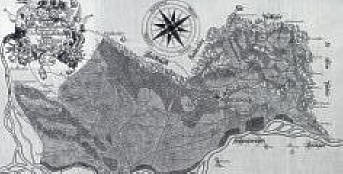

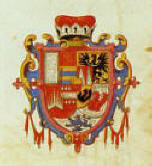
The family had always been based in Vienna and here is their residence, the Palais Liechtenstein which now houses the Liechtenstein Museum. The Garden Palace in Vienna�s present-day Rossau district was constructed during the reign of Prince Johann Adam Andreas I (1657-1712), who was one of the greatest builders of his day, building castles and palaces all over the realm.
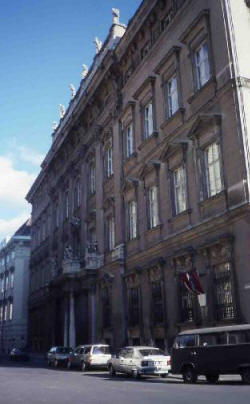
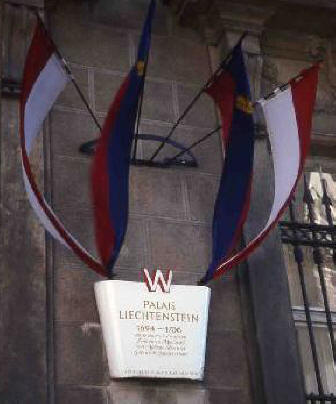
Below is the decendency of the princes from Karl I to the present day. Remember the pact they agreed upon was, that if one of the brother's lineage died out, rule over the family trust would then go to that of the next oldest brother's oldest line.
| Succession of the Ruling Princes of Liechtenstein since 1608 | ||||
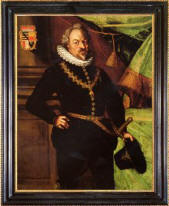 |
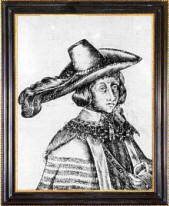 |
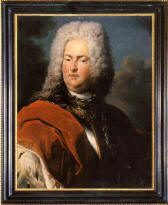 |
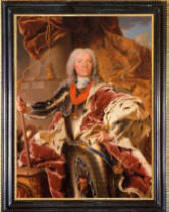 |
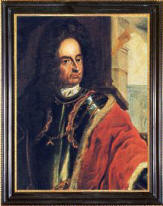 |
| Karl I | Karl Eusebius | Johann Adam Andreas | Joseph Wenzel | Anton Florian |
| 1608-1627 | 1627-1684 | 1684-1712 | 1712-1718 | 1718-1721 |
|
|
|
|
|
|
| Joseph Johann Adam | Joseph Wenzel (again) | Johann Nepomuk Karl | Joseph Wenzel (again) | Franz Joseph I |
| 1721-1732 | 1732-1745 | 1745-1748 | 1748-1772 | 1772-1781 |
|
|
|
|
|
|
| Alois I | Johann I | Alois II | Johann II | Franz I |
| 1781-1805 | 1805-1836 | 1836-1858 | 1858-1929 | 1929-1938 |
|
|
|
|
|
|
| Franz Joseph II | Hans-Adam II - | - with his wife Marie | Alois | Alois and |
| 1938-1984 | 1984-(2004) | and Family | (2004)-Present | Princess Sophia |
Liechtenstein is one of only two doubly landlocked countries in the world, being
a landlocked country wholly surrounded by other landlocked countries (the other
is Uzbekistan). It is the sixth-smallest independent nation in the world
by land area.
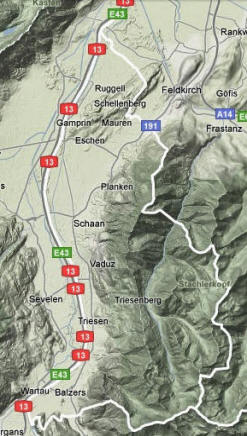 The
principality is divided into 11 communes (or Gemeinden.) Five of them (Eschen,
Gamprin [our room name,] Mauren, Ruggell, and Schellenberg) are in the Unterland
(the "lower" county in the north), and the rest (Balzers, Planken, Schaan,
Triesen, Triesenberg, and Vaduz) within Oberland (the "upper" county in the
south.)
The
principality is divided into 11 communes (or Gemeinden.) Five of them (Eschen,
Gamprin [our room name,] Mauren, Ruggell, and Schellenberg) are in the Unterland
(the "lower" county in the north), and the rest (Balzers, Planken, Schaan,
Triesen, Triesenberg, and Vaduz) within Oberland (the "upper" county in the
south.)
How did it survive Napoleon and Hitler? In 1806, Napoleon took it over but incorporated the Principality of Liechtenstein into the Confederation of the Rhine and made it a sovereign state. After Napoleon's defeat, at the Vienna Congress, the sovereignty of Liechtenstein was approved. The reign of Johann I was characterized by forward-looking reforms, but also by his absolutist governing style. It is interesting that the ruling family was based in Vienna, and it wasn't until the 11th prince, Alois II, became the first to ever visit his country (in 1842 and again in 1847) and only in the 1940s did Franz Joseph II become the first to permanently move there (I think thanks to Hitler.) In 1862, Johann II enacted a constitution which gave the people important political rights. After WWI, Liechtenstein turned more towards Switzerland. In 1921 the country obtained a modern constitution where the people's rights were fully extended. In 1984, in the 45th year of his reign, Prince Franz Joseph II appointed his eldest son Prince Hans-Adam II as his permanent representative.
On November 13, 1989, following the death of his father, Hans-Adam II assumed the regency. Even before succeeding his father, the Prince promoted an independent foreign policy for Liechtenstein. Under his leadership Liechtenstein successfully became a member of the United Nations in 1990 and the EEA (European Economic Area) in 1995 but is still not a member of the European Union and thus its currency remains Swiss francs and not the Euro. The Prince of Liechtenstein is the world's sixth wealthiest leader with an estimated wealth of $5 billion. The country's population enjoys one of the world's highest standards of living. In 2004, Hans-Adam, appointed his eldest son, Prince Alois as his permanent representative for exercising sovereign powers, in preparation for his succession to the throne. Hereditary Prince Alois married Duchess Sophie in Bavaria in 1993 and they have four children.
Below is the lineage of this family:
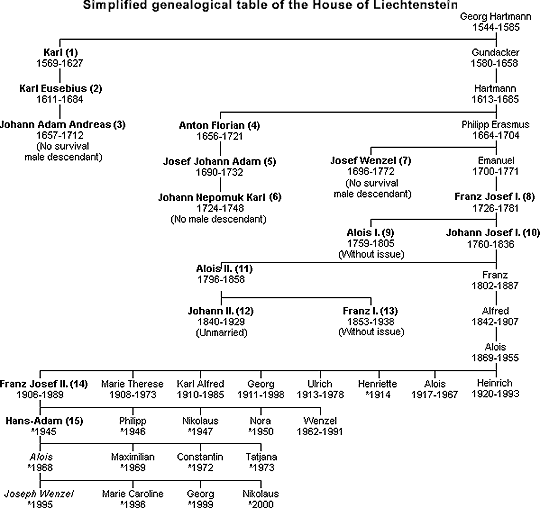
Its interesting that the lineage descended from Gundacker, not Karl. Now I know a lot more about Liechtenstein then maybe you or I needed.
Now back to the trip. I awoke at 6:45 and again at 10:35 and got up at 11:10 AM. We checked
out of the hotel at 12:45 PM and at 12:55 I went and had a cappuccino at Caf� Lobo (Wolf) [St�dtle 29,
![]() +423-232-2321] where I worked on my slides again and did my AOL email. At 1:55 PM
Marcia went to the drugstore again and at 4:05 she had lunch at the Residence
Hotel.
+423-232-2321] where I worked on my slides again and did my AOL email. At 1:55 PM
Marcia went to the drugstore again and at 4:05 she had lunch at the Residence
Hotel.
At 4:20 I finally got the gumption to go on my run and did the same as yesterday going to the Rhein and back. But once I got back to town I continued in a different direction and wound up at the L�wen where we had dinner the first night and got a shot of the patio where we ate...
...and the vineyard surrounding it.
On my way back to the hotel I was fascinated by the intricacy of the store signs hanging off the buildings.
Heading back down the hill I passed the COOP gas station and you can see the price of gas is quite high at 1.56 CHF/liter = 5.905 CHF/gallon = $5.55/gal. I passed a house with this unique sculpture of a head in the front yeard.
I got back to the room, quickly changed and packed up to load the car. When I checked out, a different girl tried to charge me a higher amount but after a long discussion, I paid what was previously negotiated. We were happy to see we never got a ticket by parking in that little cranny in front of the hotel.
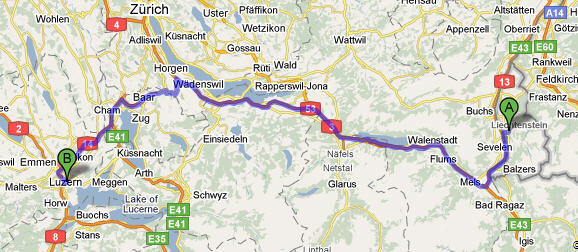
At 5:00 PM we were all loaded and ready to leave this beautiful little place (A) and Marcia drove the 82 miles first south into Switzerland and then northwest toward Zurich and then southwest to Lucerne (B) going through eight tunnels and a traffic jam in the process. Below is crossing the Rhine with the wooden bridge in the distance and the welcome to Switzerland sign.
As you can see above, we passed by some lakes and the mountain scenery on this route was simply spectacular (below.)
![]() At 7:10 PM, we arrived in the city of
Luzern
At 7:10 PM, we arrived in the city of
Luzern
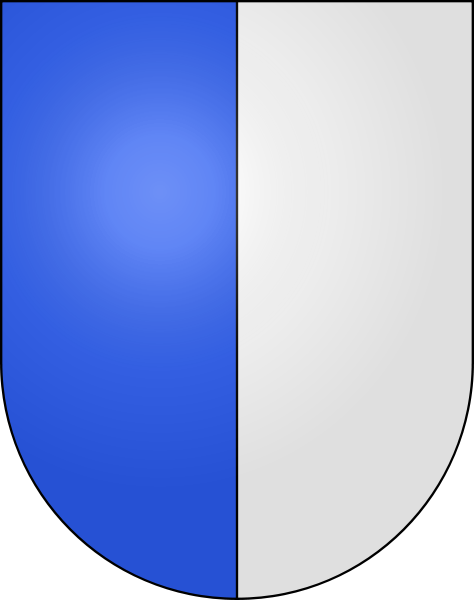 (or
Lucerne, coat
of arms, right) and using the BMW GPS, found our way through the city to the
hotel that Dr. Urs Thomann booked for us called the
Hotel Montana [Adligenswilerstraβe
22,
(or
Lucerne, coat
of arms, right) and using the BMW GPS, found our way through the city to the
hotel that Dr. Urs Thomann booked for us called the
Hotel Montana [Adligenswilerstraβe
22, ![]() +41-41-419-0000, fax-0001.]
This place was fabulous sitting up on a hill overlooking the lake. We parked out front and checked into room #210.
Luzern celebrates their centennial in 2010. You have to admit this is one
of the pretty spots on this planet (below.)
+41-41-419-0000, fax-0001.]
This place was fabulous sitting up on a hill overlooking the lake. We parked out front and checked into room #210.
Luzern celebrates their centennial in 2010. You have to admit this is one
of the pretty spots on this planet (below.)
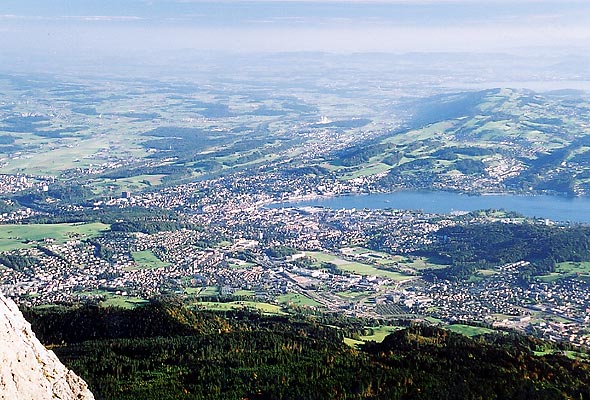
At 7:15 PM I asked the valet to fill up the car with gas since we arrived on empty. To our great surprise, Dima arrived only 10 minutes after we did and it was great to see him again. We immediately went to the room and got unpacked and then went down to the Host Reception for the meeting of the faculty at the Hotel bar. This the meeting of the Swiss Refractive Surgery which was started when I accepted an invitation by Dr. Thomann to give two long lectures here during our tour of Italy in 1997 (See Italy trip.) That meeting grew each year bringing all the eye surgeons from Switzerland. We again invited back in 2003 at the beginning of our Scandinavia trip.
We had a chance to meet the other invited speakers and enjoy some champagne and coctails and at 8:15 PM we all sat down for the group dinner.
Below left is Dima talking to one of our Swiss hosts and on the right is Dr. Preussner with his charming wife talking to Urs Thomann (center.)
Below is Marcia and Dima and another example of the difference between with a flash and without.
There were a lot of different wines; we had Ch�teau Lichten '07 Rouvinez, Sierre, Wallis, Schweiz Naturalis Historia '01 Mastroberardino, Italien Clos l'Abba '03 Gran Cru, and St. Emilion Frankreich. We were given appetizers of avocado [Riesengamele mit Avacado,] and passion fruit in sorbet [Passionsfrucht und Basilkumsorbet.] I was so busy with the wine and chatting that I forgot to take photos.
For dinner we had grilled fish with fennel-basil mousse and youg carrots with lobster sauce [Gebratenes Zanderfilet auf Fenchel-Basilkummousseline jungen Karotten und Hummersauce (below left).] The we had Swiss beef steak with polenta and a ragout of young radishes with juice of Casis [Schwyzer Entrec�te vom Rind auf Thymianpolenta with Ragout von Junglauch und ger�ucherten Radieschen mit Cassisjus] (below right.)
For the dessert we had sorbet parfait of berries in a chocolate cup with poached peach and pistaccio sauce [Marmoriertes Walderdbeerenparfait I'm Schokoladenmantel mit pochiertem Pfirsch und Pistaziensauce.]
It was all very good. After dinner we sat around chatting and I met Dr. Rudy Nuijts from Maastrict (Holland) and I talked about our upcoming visit to Holland. We finally gave up, went upstairs and got to bed at 1:30 AM.
Kenneth J. Hoffer, MD
Luzern, Switzerland
2-1-2010
If you enjoyed these travels or wish to add comments on the places we visited
Please Leave Me a Message by clicking the spinning @ sign.

